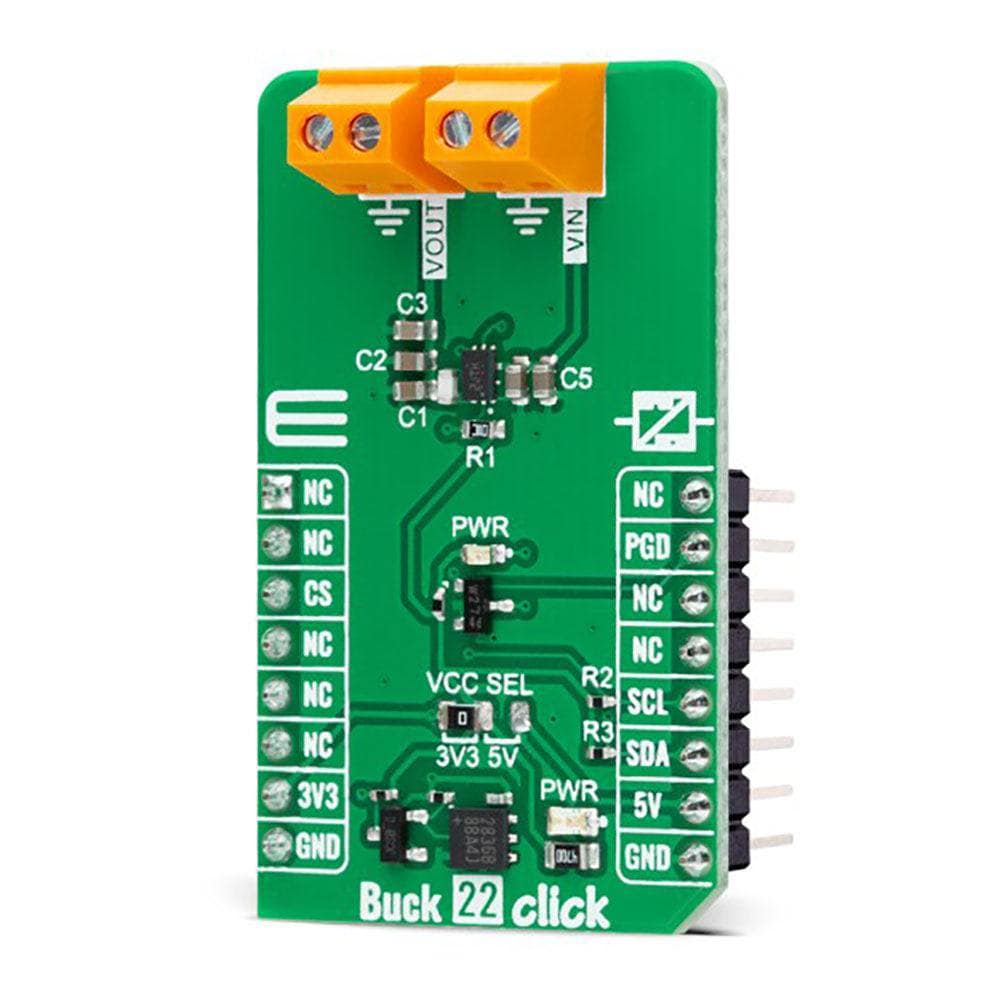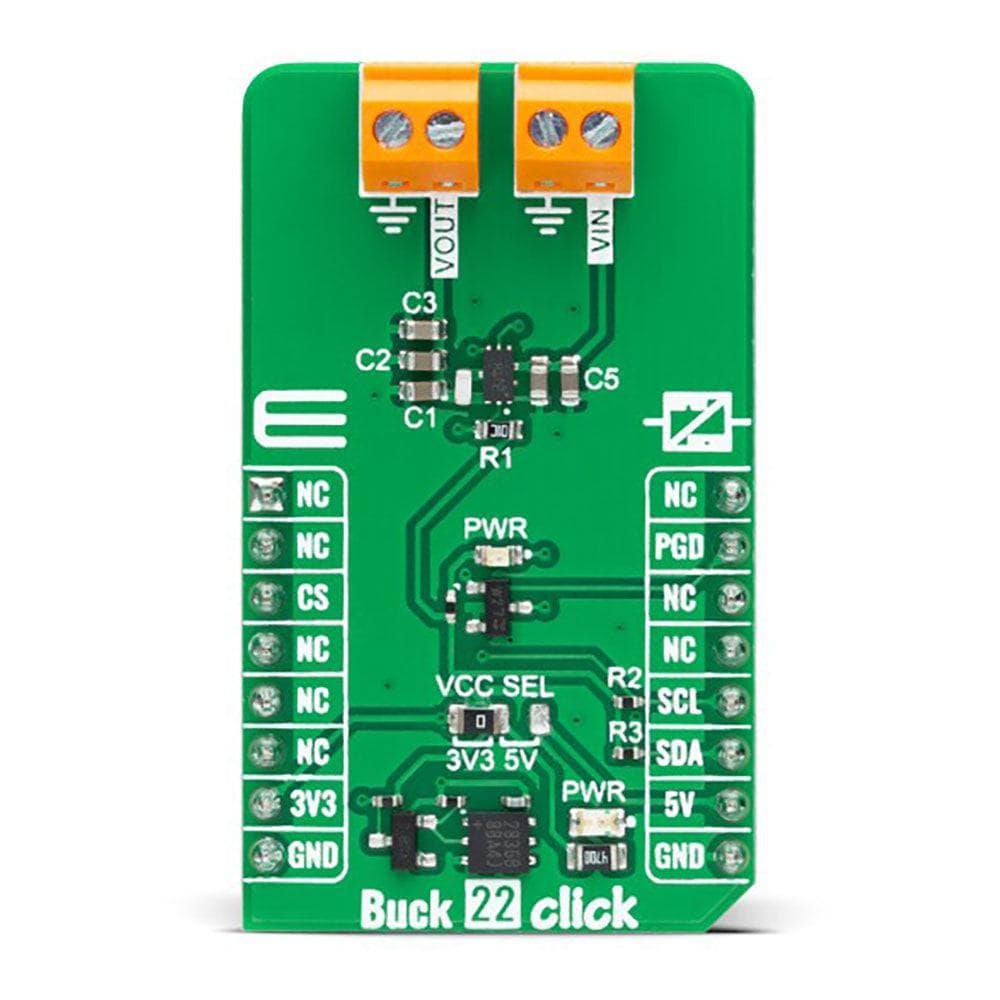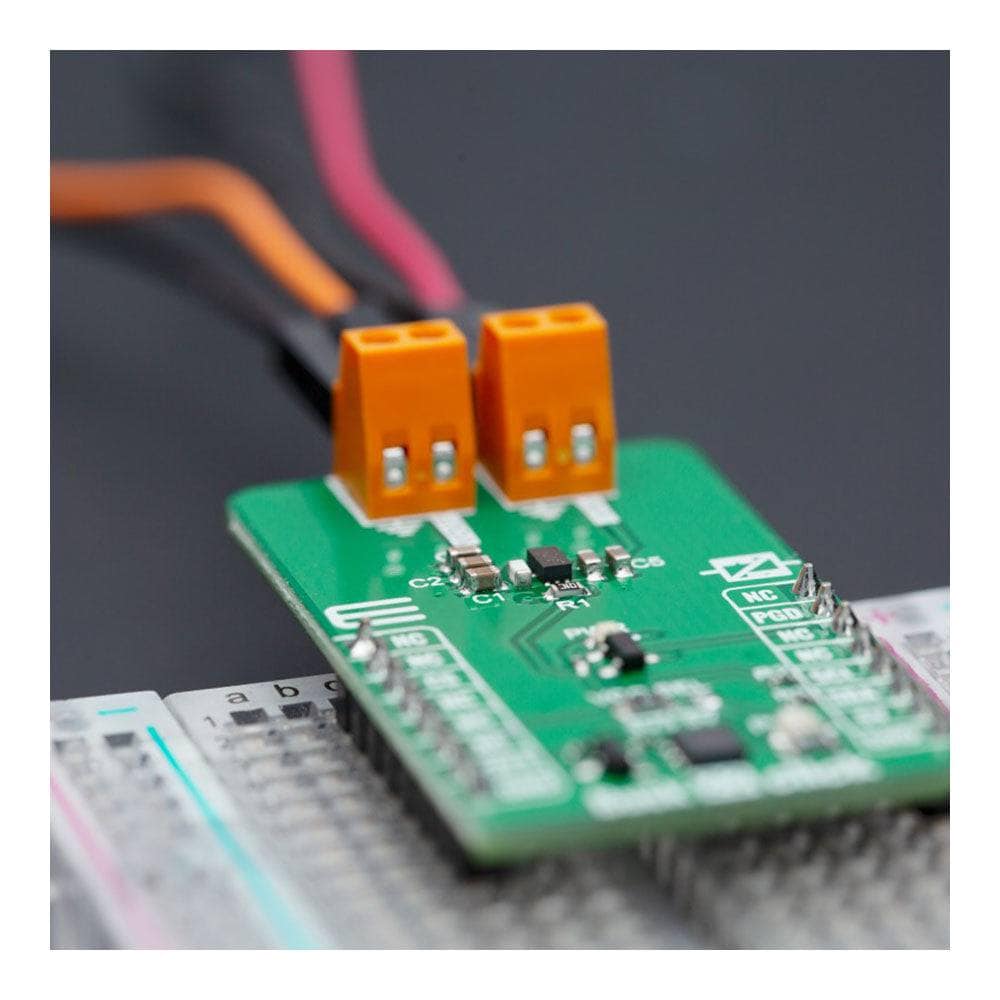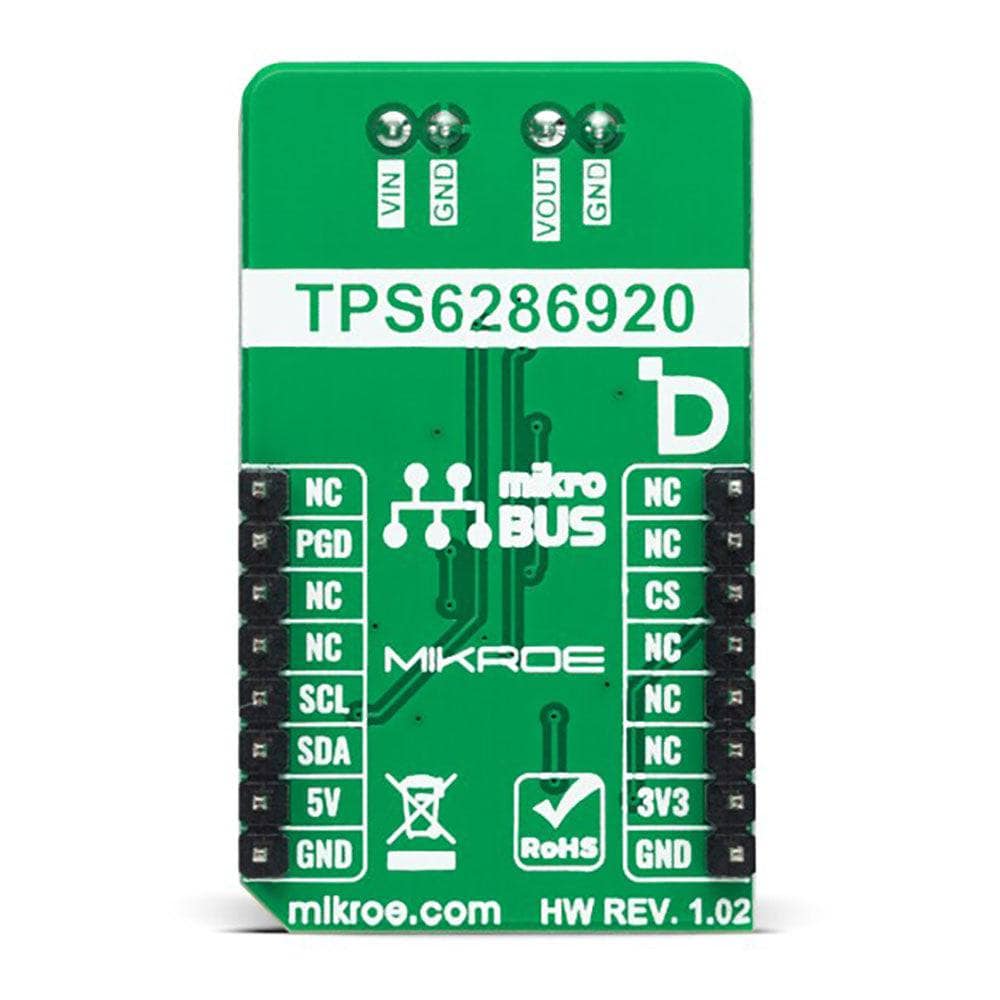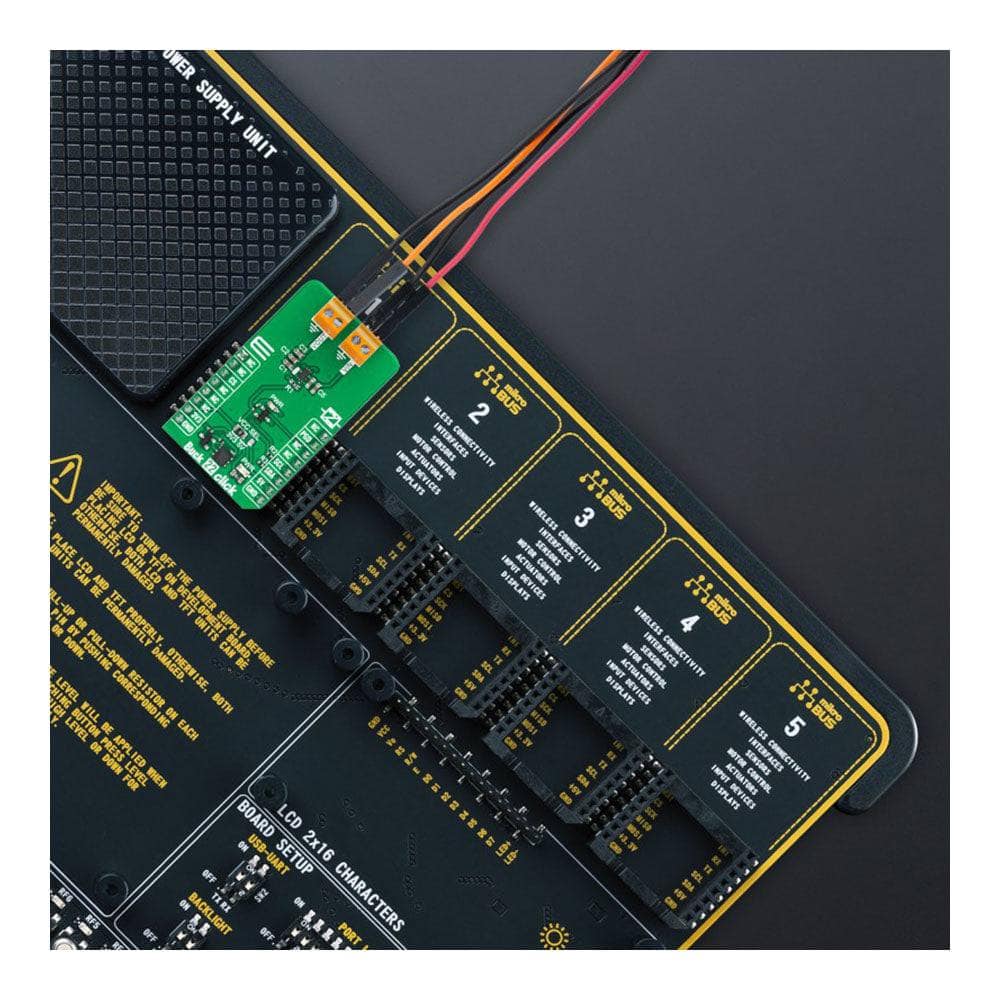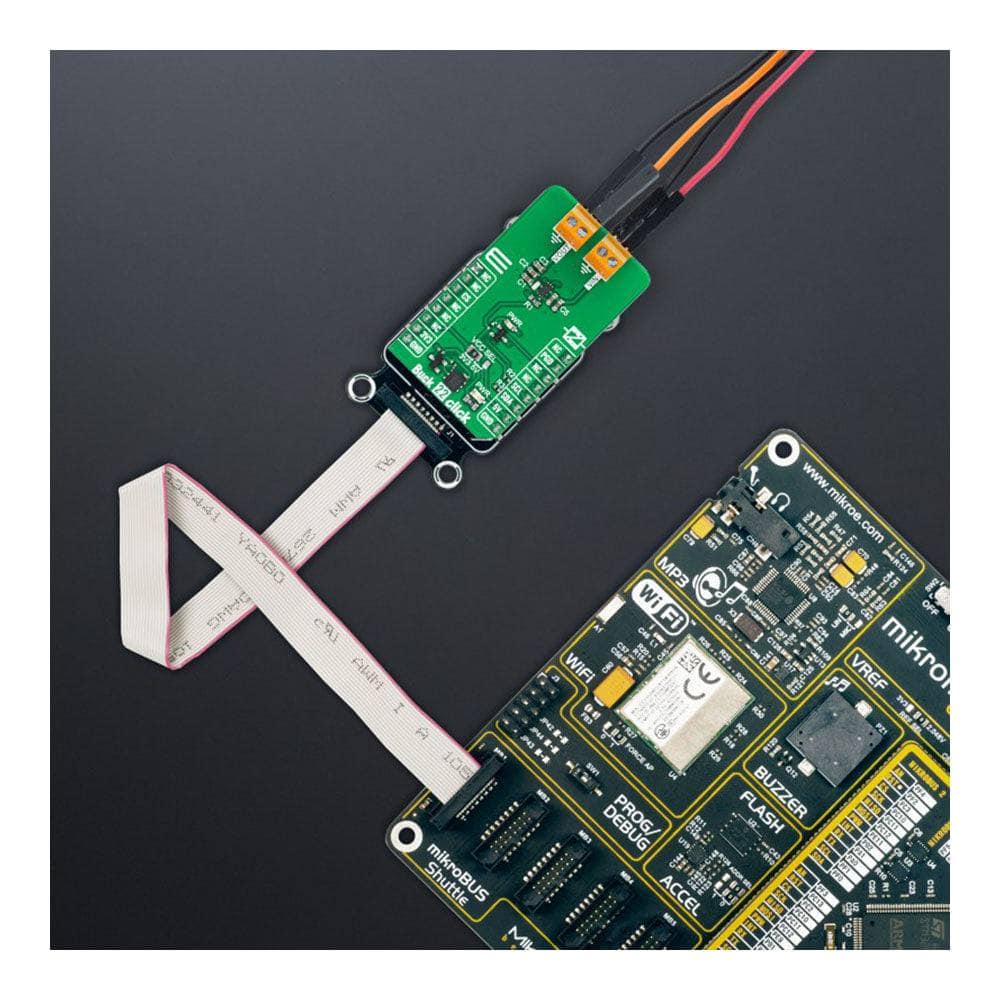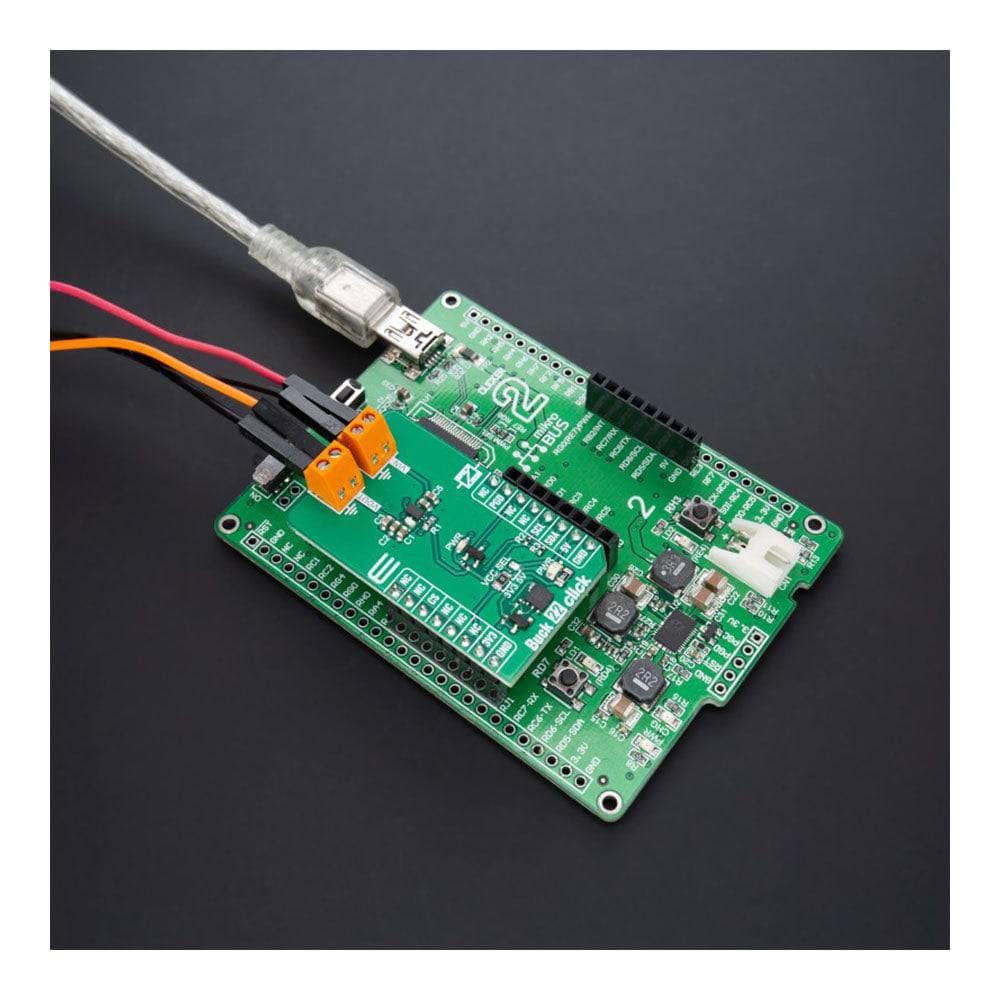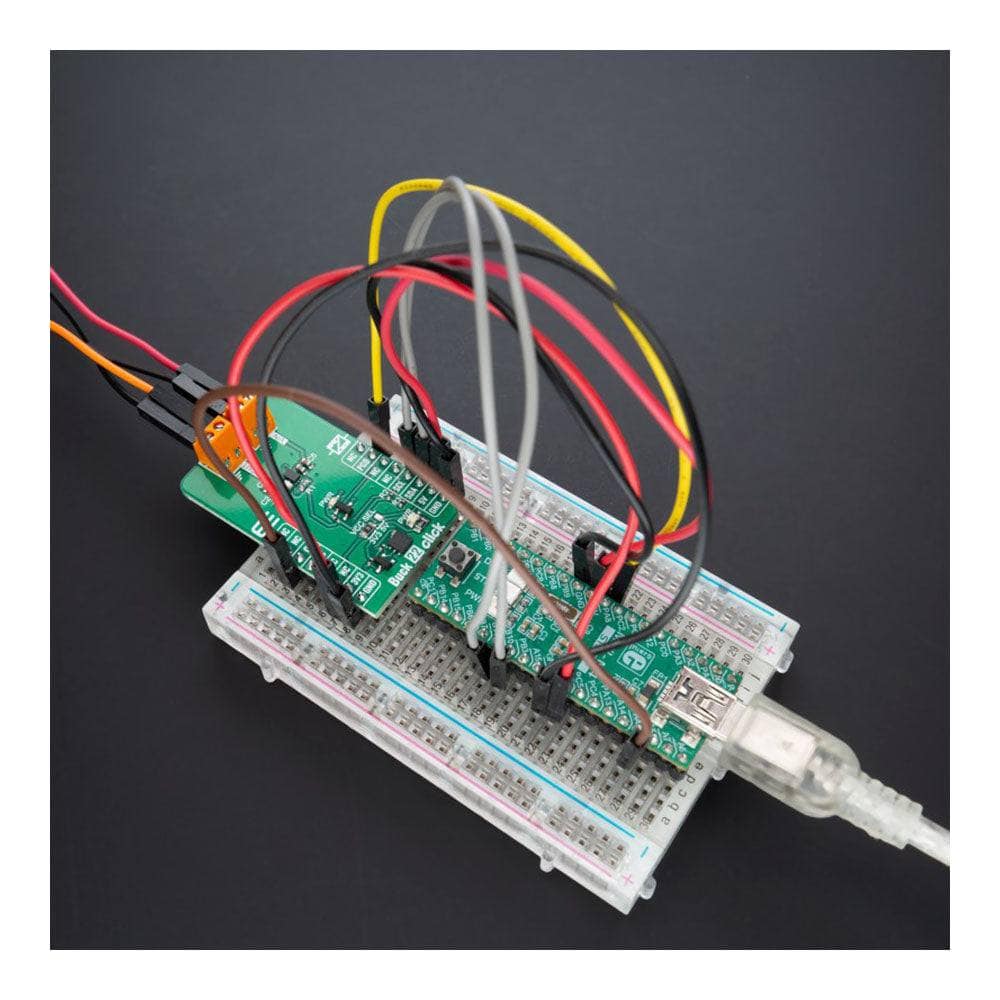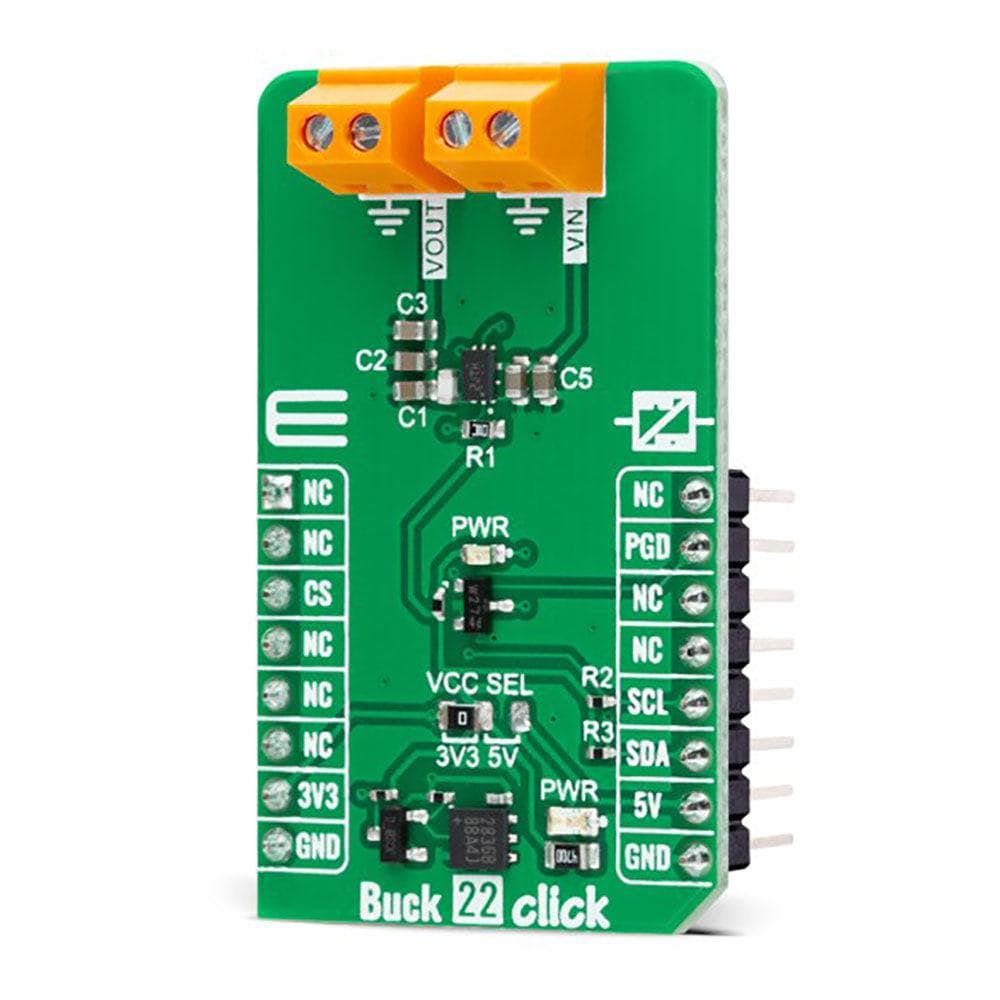
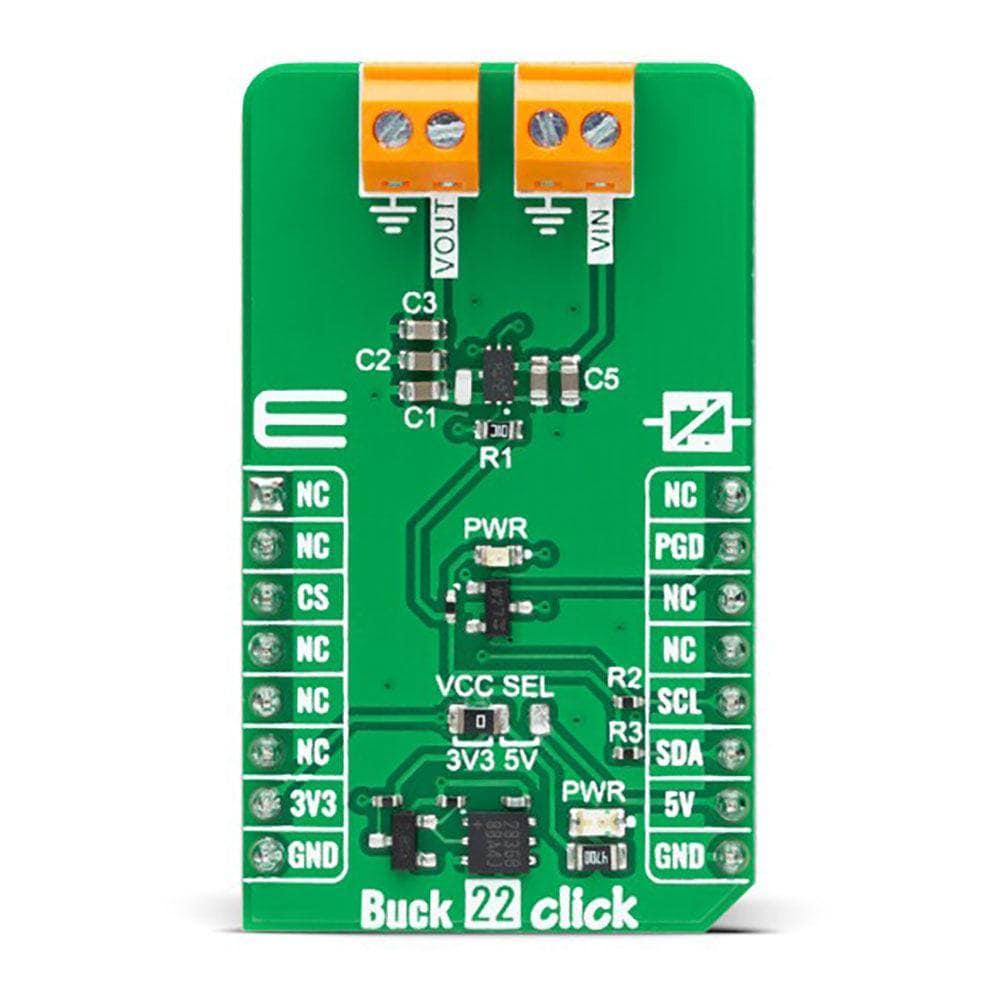
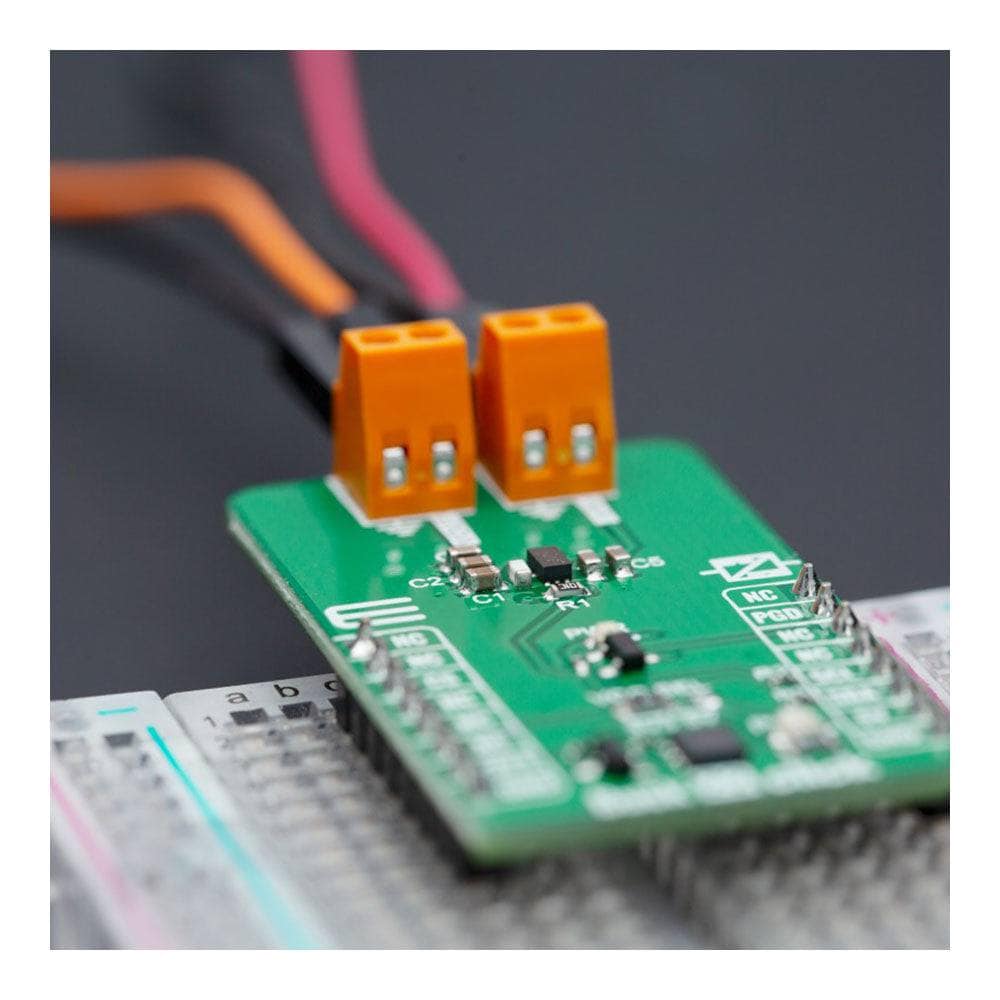
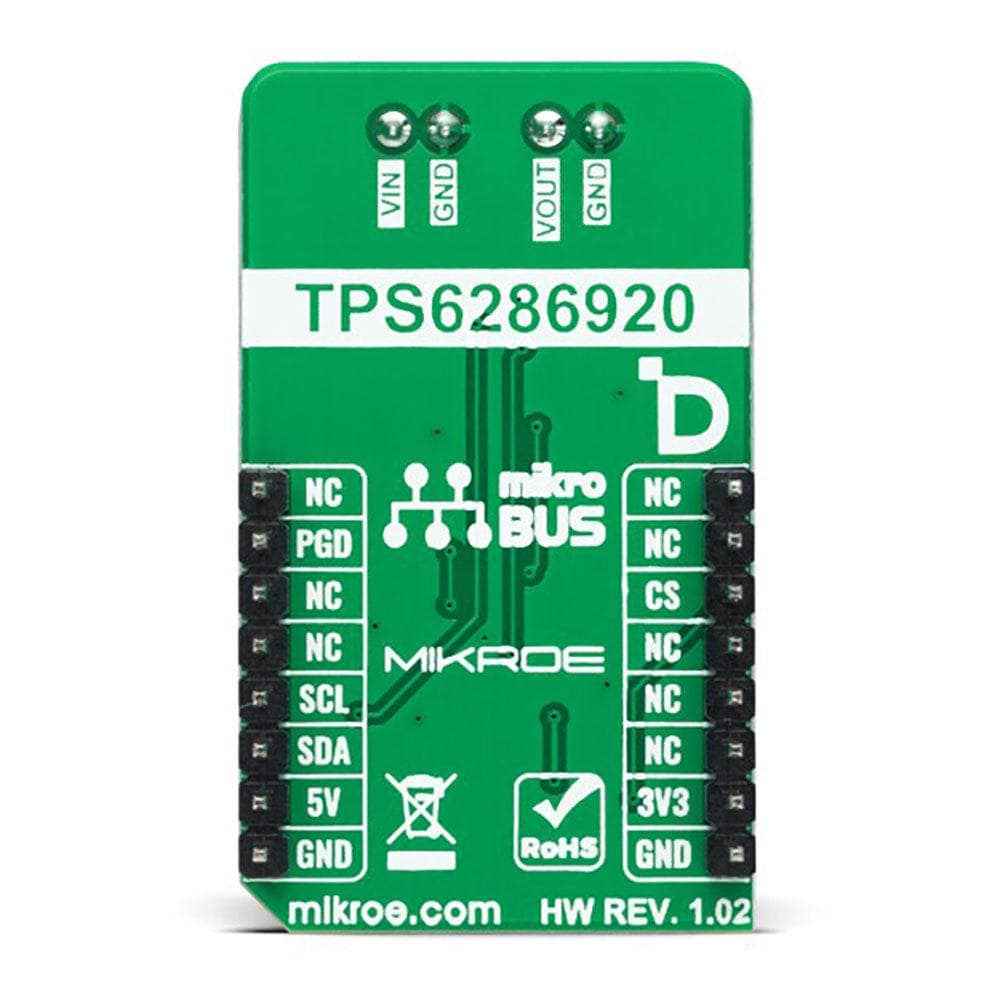
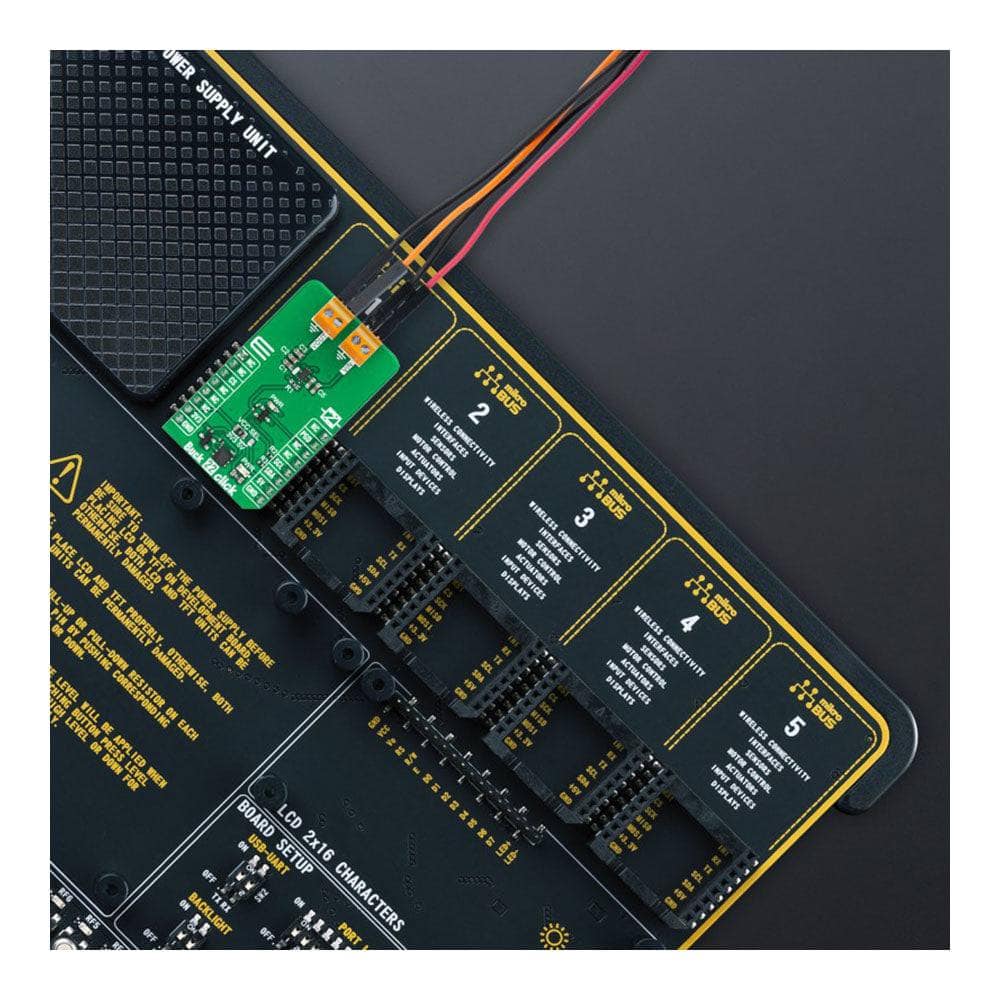
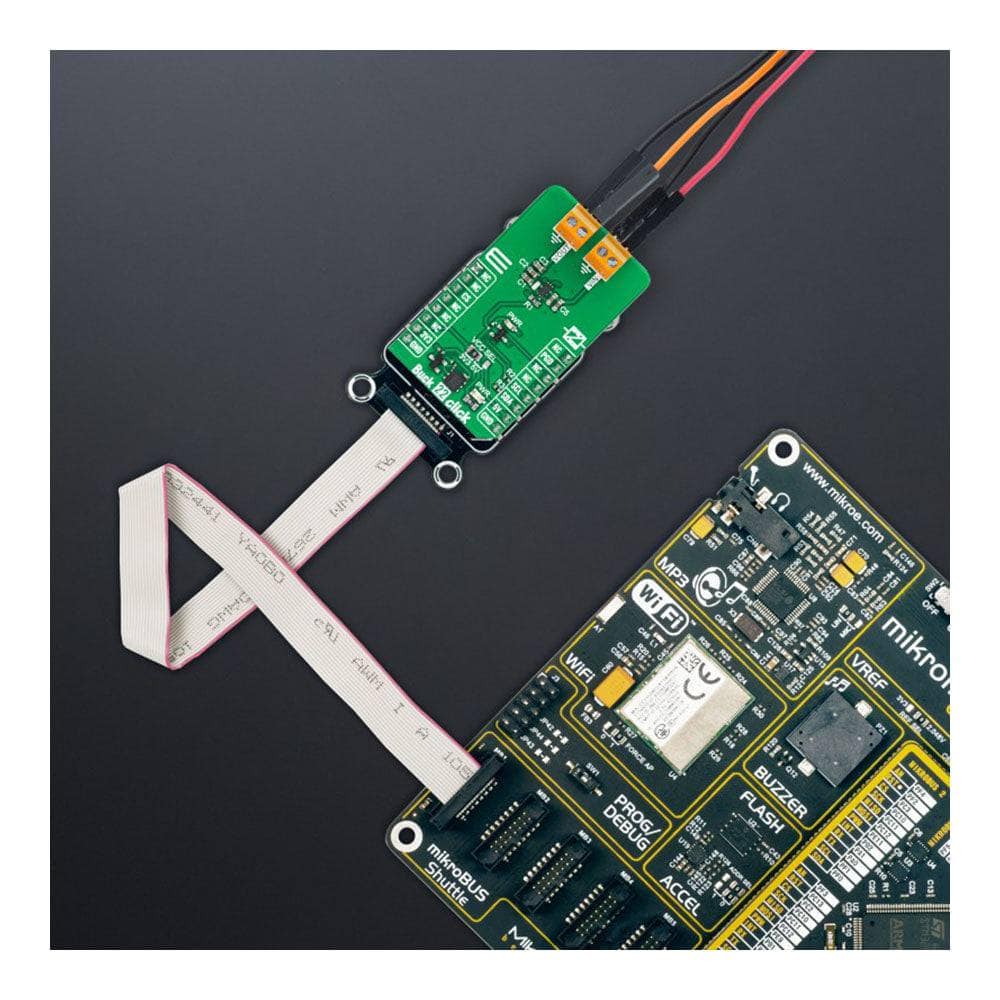
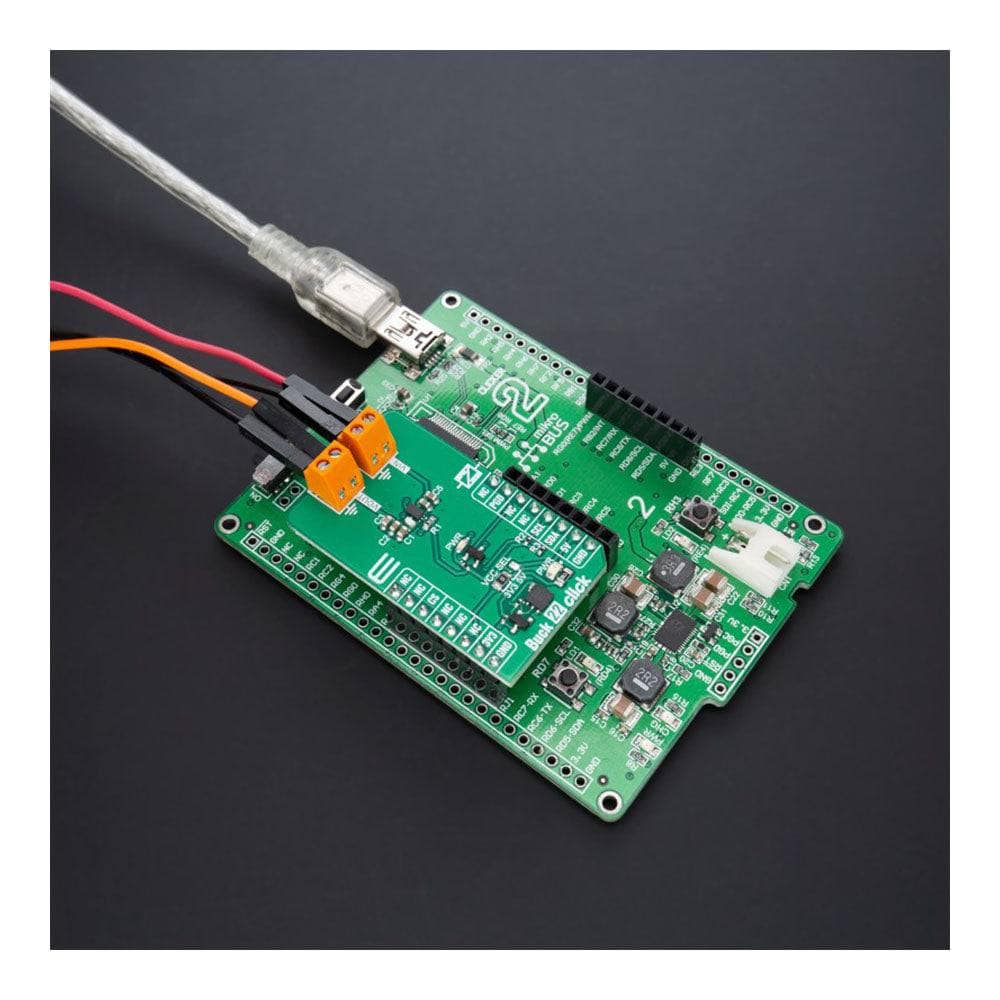
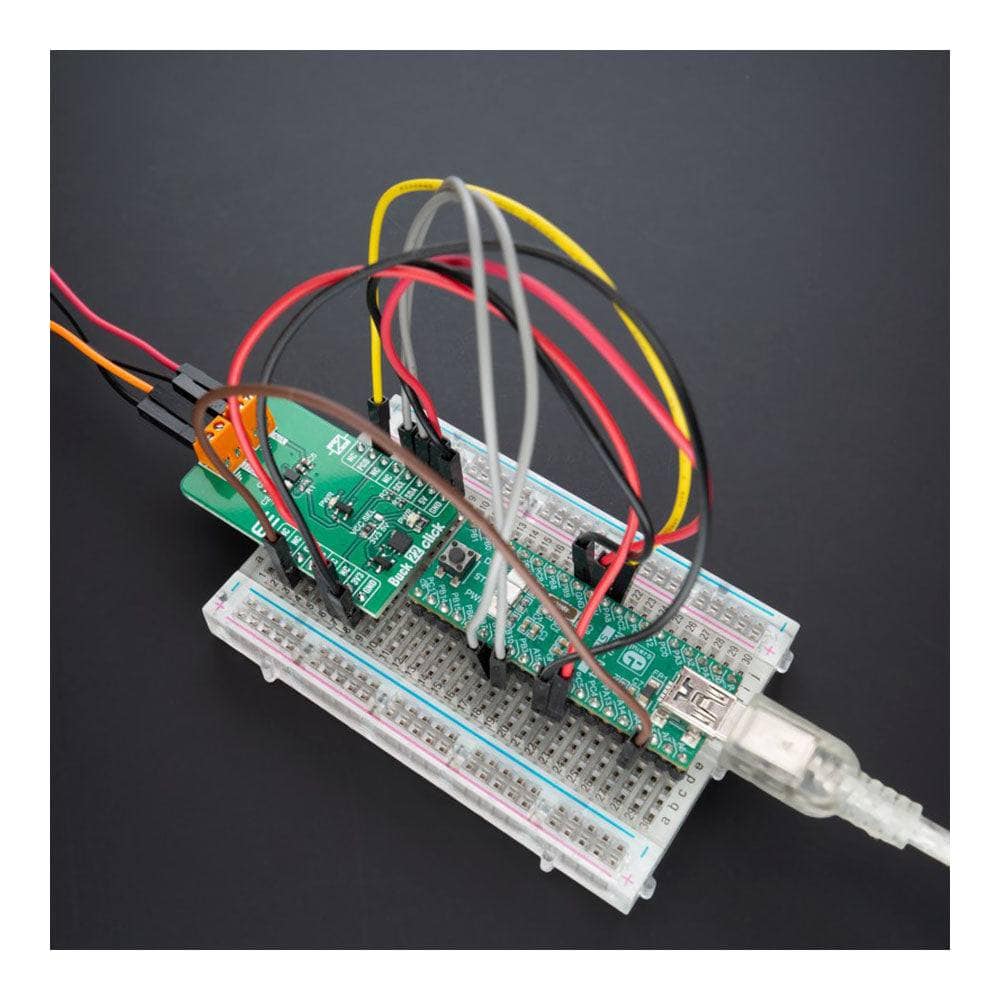
Key Features
Overview
The Buck 22 Click Board™ is a compact add-on board that steps down the voltage from its input (supply) to its output (load). This board features the TPS62869, a high-frequency synchronous step-down converter with an I2C interface from Texas Instruments, providing an efficient, adaptive, and high power-density solution. The TPS62869 operates in PWM mode at medium to heavy loads (for the slightest output voltage ripple). It automatically enters Power-Save Mode operation at a light load to maintain high efficiency over the entire output load current range. With its DCS-Control™ architecture, excellent load transient performance and tight output voltage accuracy are achieved alongside adjustable output voltage range from 0.8V to 3.35V with a 10mV step size. This Click board™ is used to derive the required input voltage from a higher voltage source for FPGAs, ASICs, video chipsets, solid-state drives, and many more.
The Buck 22 Click Board™ is supported by a mikroSDK-compliant library, which includes functions that simplify software development. This Click board™ comes as a thoroughly tested product, ready to be used on a system equipped with the mikroBUS™ socket.
Downloads
La Buck 22 Click Board™ est une carte complémentaire compacte qui abaisse la tension de son entrée (alimentation) à sa sortie (charge). Cette carte est équipée du TPS62869, un convertisseur abaisseur synchrone haute fréquence avec une interface I2C de Texas Instruments, offrant une solution efficace, adaptative et à haute densité de puissance. Le TPS62869 fonctionne en mode PWM à des charges moyennes à lourdes (pour la plus légère ondulation de tension de sortie). Il passe automatiquement en mode économie d'énergie à une charge légère pour maintenir une efficacité élevée sur toute la plage de courant de charge de sortie. Grâce à son architecture DCS-Control™, d'excellentes performances transitoires de charge et une précision de tension de sortie serrée sont obtenues ainsi qu'une plage de tension de sortie réglable de 0,8 V à 3,35 V avec un pas de 10 mV. Cette carte Click™ est utilisée pour dériver la tension d'entrée requise à partir d'une source de tension plus élevée pour les FPGA, les ASIC, les chipsets vidéo, les disques SSD et bien d'autres.
La carte Click™ Buck 22 est prise en charge par une bibliothèque compatible mikroSDK, qui comprend des fonctions qui simplifient le développement logiciel. Cette carte Click™ est un produit entièrement testé, prêt à être utilisé sur un système équipé du socket mikroBUS™.
| General Information | |
|---|---|
Part Number (SKU) |
MIKROE-5446
|
Manufacturer |
|
| Physical and Mechanical | |
Weight |
0.02 kg
|
| Other | |
Country of Origin |
|
HS Code Customs Tariff code
|
|
EAN |
8606027386398
|
Warranty |
|
Frequently Asked Questions
Have a Question?
Be the first to ask a question about this.

